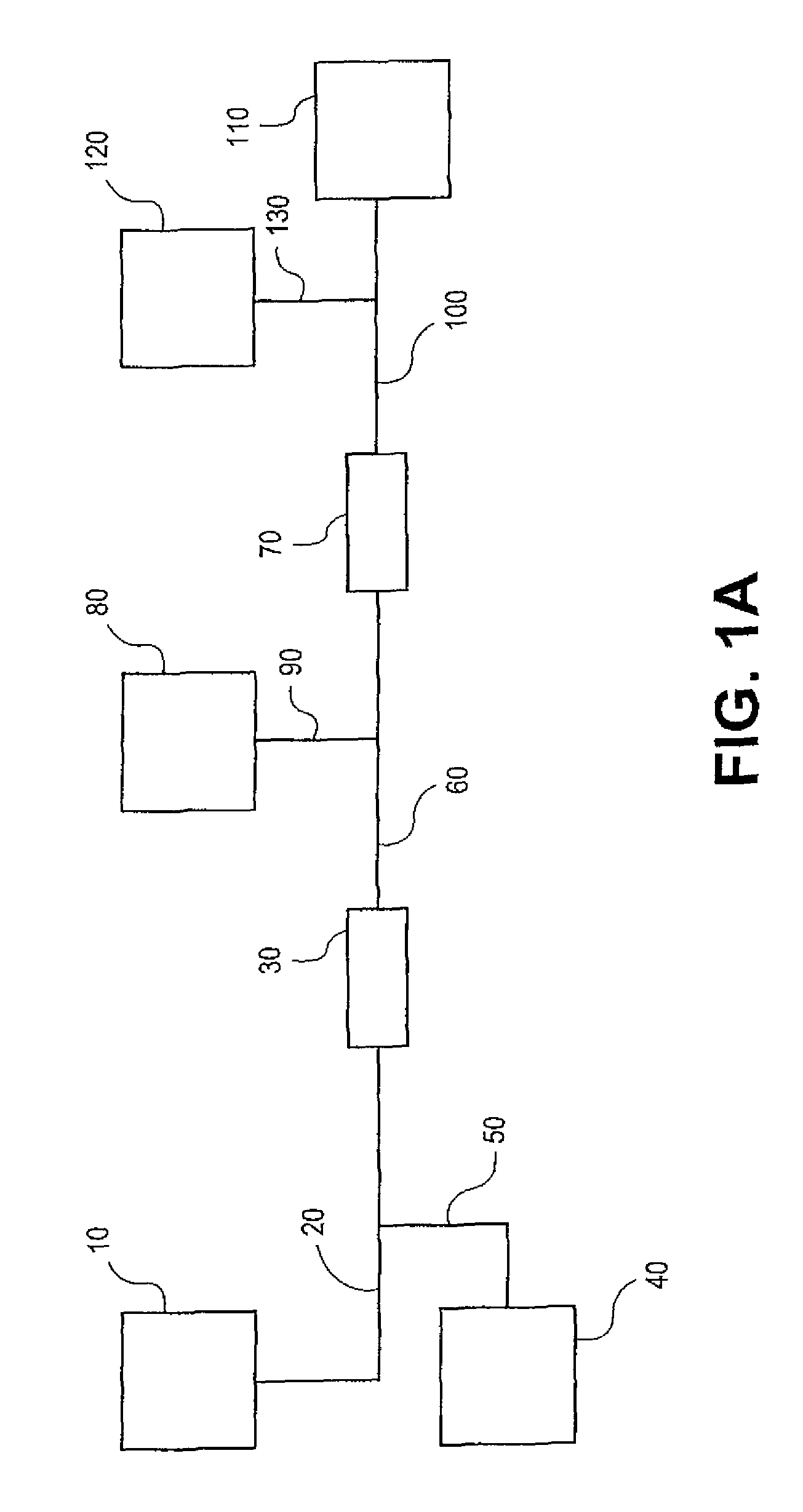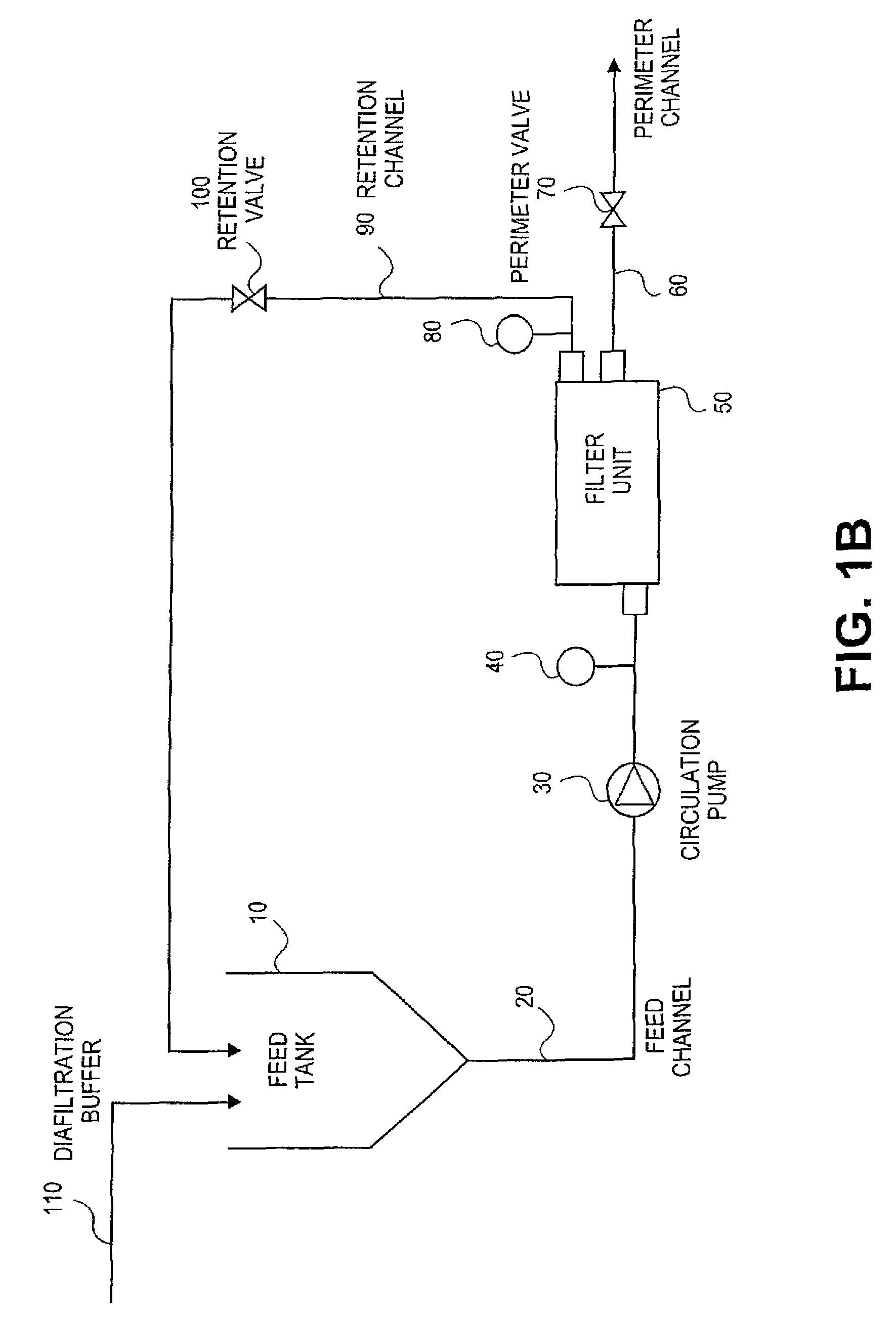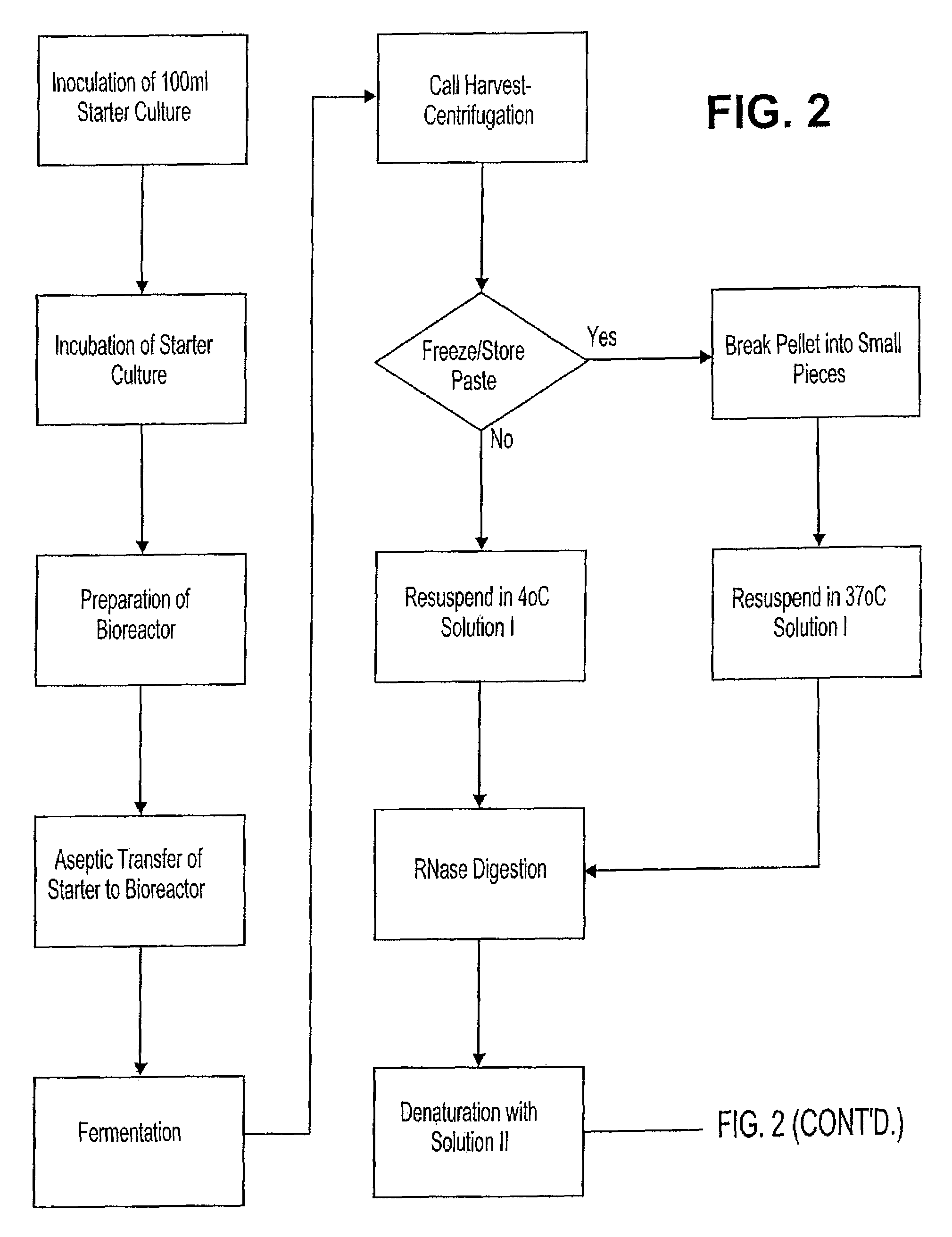Methods for purifying nucleic acids
a nucleic acid and purification technology, applied in the preparation of sugar derivatives, chemical/physical processes, wet separation, etc., can solve the problems of not addressing the human clinical use of purified nucleic acids, the safety or efficacy of the resulting nucleic acid, and the scale-up is difficult or impractical, so as to minimize the shear of genomic dna, maximize recovery, and quick to maintain dna integrity
- Summary
- Abstract
- Description
- Claims
- Application Information
AI Technical Summary
Benefits of technology
Problems solved by technology
Method used
Image
Examples
example 1
Preparation of p4119 DNA
[0061]Pharmaceutical quality DNA was prepared as follows, using aseptic culture conditions for all cell culture procedures. FIG. 2 is a schematic representation of the procedural steps.
[0062]An inoculum of E. coli containing plasmid p4119 (FIG. 3) was prepared from frozen stock by the addition of 1 ml of frozen (−80° C.) bacterial culture to a 500 ml foam-plugged flasks containing 100 ml TB broth (Sambrook et al., 1989) supplemented with carbenicillin (100 μg / ml). Cultures were incubated at 37° C. and shaken at 220 rpm for approximately 6 hours. Culture growth was determined by visual inspection or by determining OD600, whereby OD values between 0.5 and 5 were deemed acceptable.
[0063]5 ml of this culture was used to inoculate each of 4 bioreactors containing 10 L TB media supplemented with carbenicillin (100 μg / ml) and with 1 ml / 10 L Mazu DF204 antifoaming agent. These cultures were incubated at 3.7° C. and stirred initially at about 300 rpm. The cultures wer...
example 2
[0079]The following example shows that either going at too slow a linear velocity through the static mixer or using too few mixing elements will result in poor mixing and poor lysis of the cells, leading to low product yields (Table 2 below).
[0080]
TABLE 2Effects of different flow velocities (shear rate) as a function of number ofelements.KenicShearPipeI.D. pipe# ofVelocityViscosityRateMixerDiam (in)Elements(ft / sec)(cps)(sec−1)After LysisPipe 10.375240.7725590well mixed0.375241.50251156well mixed0.375180.7725590some heterogeneity0.375181.50251156some heterogeneityAfter PrecipitationPipe 20.620240.373170uniformed, buoyant ppt0.620240.743343uniformed, buoyant ppt0.620180.373170uniformed, buoyant ppt0.620180.743343uniformed, buoyant ppt
Using 24 elements is optimal to achieve a well mixed homogenous system after the first mixing step (cell lysis by sodium hydroxide / detergent).
example 3
[0081]The following example shows that using too high a linear velocity or too many mixer elements, especially in the second static mixer, will result in a finely divided precipitate due to too high a shear rate. The effect of too high a shear rate is that the quantity of contaminating genomic DNA in the final product is increased, and it can cause shear damage to the plasmid DNA. Table 3 shows the level of genomic DNA contamination, based on analyzing the outflow of the second static mixer by Southern blot analysis.
[0082]
TABLE 3Plasmid quality vs. linear velocity.GenomicDNAActual dataconcentrationw KenicI.D. pipeShearbasedpipeFlowrateDiamViscosityVelocityrateon Southernmixer(lpm)(in)(cps)Reynolds(ft / sec)(1 / sec)blot (μg / ml)No>30mixer(control)w / >30impeller(control)Pipe 20.660.62033260.1986 15-301.310.62036460.371717.5-152.630.620312970.743437.5-153.940.620319441.115147.5
[0083]Table 3 shows the genomic DNA content as a function of linear flow velocity in a 24 element static mixer. It ...
PUM
 Login to View More
Login to View More Abstract
Description
Claims
Application Information
 Login to View More
Login to View More - R&D
- Intellectual Property
- Life Sciences
- Materials
- Tech Scout
- Unparalleled Data Quality
- Higher Quality Content
- 60% Fewer Hallucinations
Browse by: Latest US Patents, China's latest patents, Technical Efficacy Thesaurus, Application Domain, Technology Topic, Popular Technical Reports.
© 2025 PatSnap. All rights reserved.Legal|Privacy policy|Modern Slavery Act Transparency Statement|Sitemap|About US| Contact US: help@patsnap.com



